Key points:
- Small, daily balance and strength moves reduce fall risk and build confidence, start gently and progress.
- Combine balance, strength, and walking, aim for short daily practice plus two strength days weekly.
- Safety first, clear space, proper shoes, medication and vision checks, and consult a clinician when needed.
Preventing falls in older adults starts with simple daily movement. Gentle leg lifts, heel raises, and balance drills strengthen core stability and improve confidence on uneven surfaces. Adding short walks, seated stretches, and light resistance bands can keep muscles active without strain. Over time, these consistent routines enhance coordination and reduce the risk of serious injuries.
This article shows safe, research-backed exercises anyone can do at home every day, plus progressions, safety tips, and when to involve a therapist. If a loved one needs help turning exercise into a safe program, consider linking them with in-home physical therapy services that can customize exercises and supervise progress.
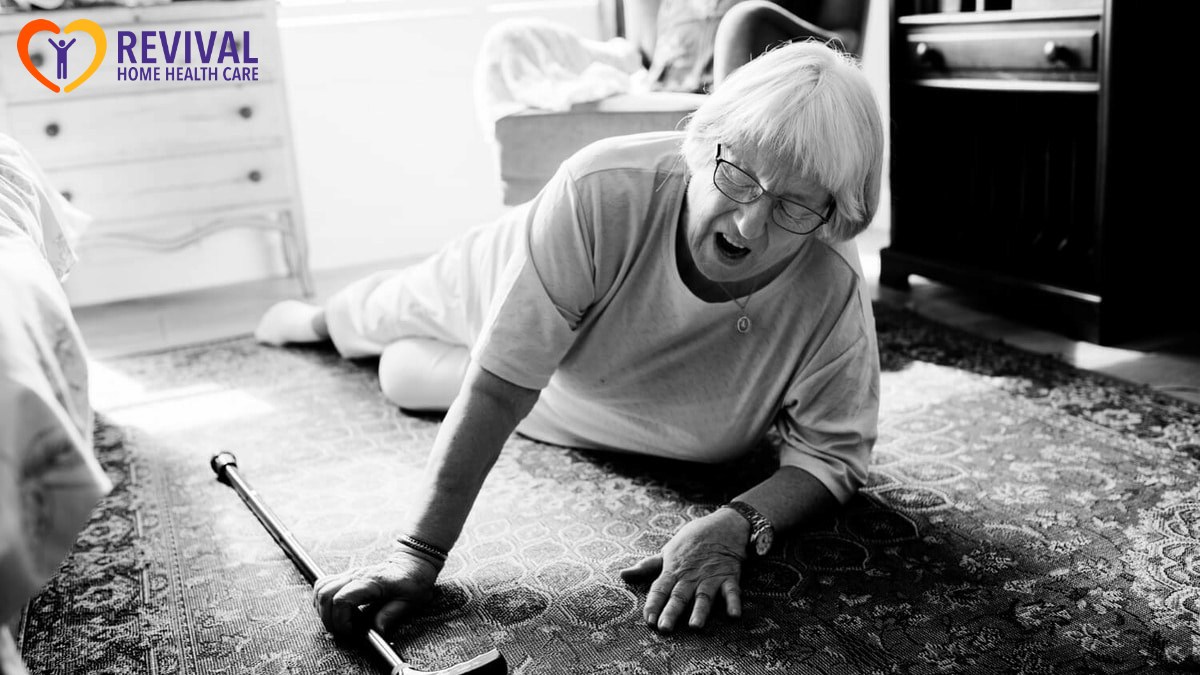
Why falls increase with age, and why that matters
As people age, there are several overlapping changes that raise fall risk, including weaker leg muscles, slower reaction time, changes in balance and posture, vision changes, side effects from medications, and environmental hazards. More than one in four older adults falls each year, and a first fall doubles the chance of falling again, making prevention vital.
The evidence, simply stated; exercise works
High-quality reviews show exercise reduces both the rate of falls and the number of people who fall. Programs that combine balance training with resistance work give the biggest benefits, lowering fall rates substantially in community-dwelling older adults. In short, movement is medicine for fall prevention.
What types of exercises actually prevent falls
To lower fall risk, focus on three complementary categories, these are the building blocks of a safe plan.
Balance and functional training
Balance exercises challenge the body to remain steady in changing positions, and they improve reaction to trips or slips. Examples are single-leg stands, heel-to-toe walking, and side-stepping. These exercises are the most directly linked to fewer falls.
Strength training, especially for legs and hips
Stronger hip and thigh muscles make everyday tasks like standing from a chair, climbing stairs, and catching yourself after a trip much safer. Aim for progressive resistance or bodyweight moves such as chair stands, step-ups, and heel raises. National guidance encourages combining balance and strength work for best protection.
Mind-body movement, for coordination and confidence
Practices like Tai Chi improve balance, coordination, and fear of falling. Multiple reviews show Tai Chi lowers fall risk, and its gentle, flowing movements make it ideal for many older adults. Consider adding short Tai Chi sessions or similar exercises several times per week.
Evidence-based older adult programs
Programs designed for seniors, such as the Otago Exercise Program, combine strength, balance, and a home-walking plan, and have been shown to reduce falls and support lasting improvements. When a tailored program is needed, these protocols provide clear structures for safe progression.
Daily exercises you can start today, explained and safe
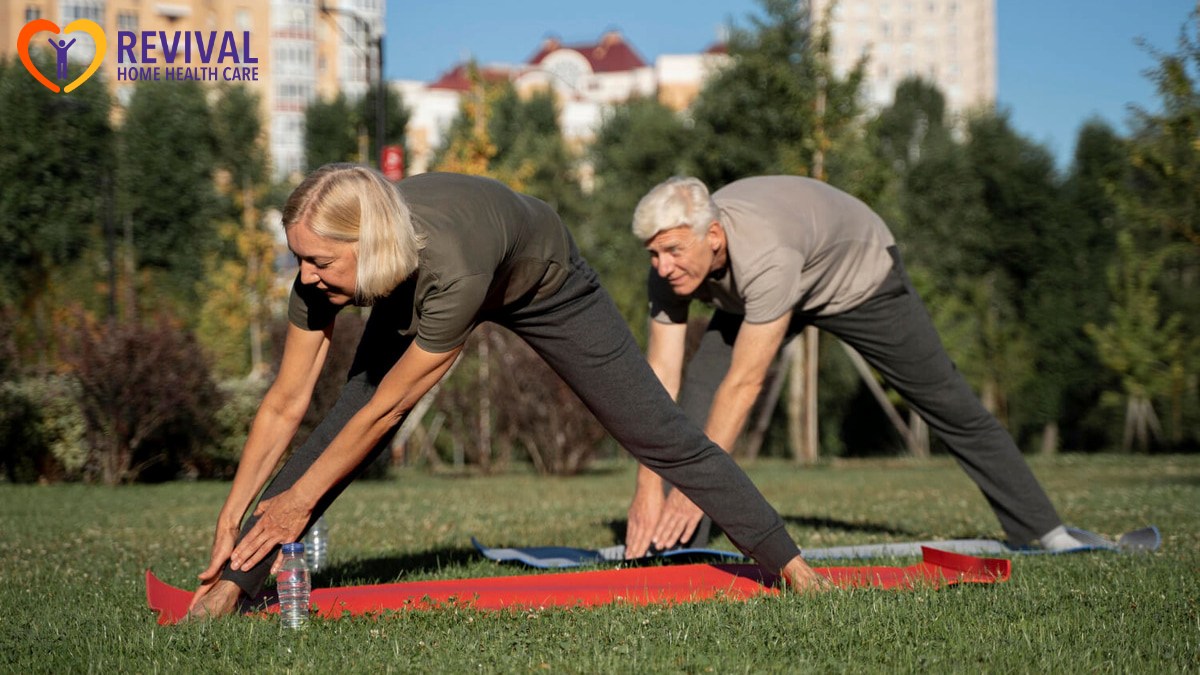
Below are simple moves appropriate for many older adults. Perform them near a sturdy chair or counter, and stop if you feel dizzy or lightheaded. Start slowly, and aim for short daily practice, increasing reps and difficulty as balance and strength improve.
- Sit-to-stand, 10 repetitions: Sit in a chair with feet hip-width, cross arms over chest if comfortable, stand up fully then sit back slowly. Builds the muscles used for rising and reduces dependence on hands.
- Heel raises, 10 to 15 repetitions: Stand behind a chair, hold lightly, rise up onto toes, then lower slowly. Strengthens calves, improves ankle control for balance.
- Marching in place, 1 to 2 minutes: Lift knees one at a time, swing arms naturally. Improves coordination and endurance, great for warming up.
- Single-leg stand, 10 to 30 seconds each side: Hold the back of a chair, lift one foot just off the floor. If steady for 30 seconds, try without hand support while staying close to a chair.
- Tandem or heel-to-toe walk, 10 steps out and back: Walk placing heel of one foot directly in front of the toes of the other, helps with dynamic balance and gait stability.
- Side step and return, 8 to 12 steps each way: Take controlled steps to the side, keep knees soft, strengthen hip abductors and improve lateral balance.
- Wall push-ups, 8 to 12 repetitions: Stand facing a wall, hands at chest height, bend elbows to bring chest toward wall, push back. Builds upper body support for using a cane or rising from low surfaces.
- Seated leg extensions, 10 repetitions per leg: From a seated position, extend one leg until straight, hold briefly, lower. Good for those with limited standing tolerance.
Tips for reps and progression:
- Begin with one set of each exercise and progress to two or three sets as strength and confidence grow.
- Increase challenge by reducing hand support, slowing the descent, or adding light ankle weights only after clearing with a clinician.
- Consistency beats intensity, short daily sessions are better than occasional long workouts.
A simple 10-minute daily routine to get started
This routine is easy to remember, can be done every day, and fits into a morning or afternoon slot.
- Warm-up, march in place for 1 minute.
- Sit-to-stand, 10 reps.
- Heel raises, 12 reps.
- Single-leg stand, 15 seconds per side, hold chair for support.
- Tandem walk, 10 steps forward and back.
- Wall push-ups, 10 reps.
- Finish with gentle walking or seated breathing for one minute.
Do this 6 or 7 days a week. After 2 to 4 weeks, increase repetitions, reduce support, or add a second daily mini-set.
A weekly plan that balances short daily practice with strength sessions
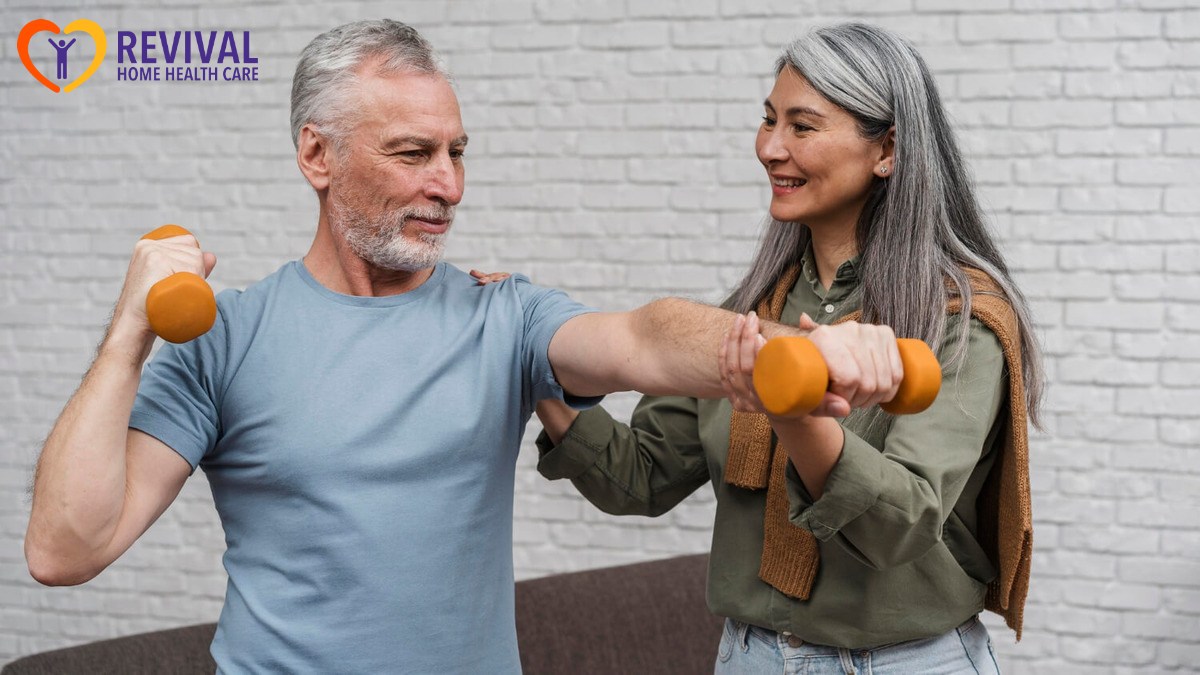
To build lasting strength and endurance, combine daily balance moves with slightly longer strength sessions twice a week.
- Daily, 10 minutes: the routine above.
- Twice weekly, 20 to 30 minutes: focus on 2 to 3 sets of stronger leg exercises, plus longer walk sessions.
- Aim for gradual progression, track what is comfortable and what is challenging.
Following this approach aligns with expert recommendations that stress helping seniors stay active and mobile with regular balance work alongside muscle-strengthening activity for the best fall prevention outcomes.
Safety first, practical precautions
Safety matters more than completing a set. Use these common-sense checks.
- Clear the area of rugs, cables, and clutter, ensure good lighting.
- Wear supportive, non-slip shoes, not slippers or socks alone.
- Always exercise near a stable support the first few weeks, like a countertop or chair.
- Review medications with a clinician or pharmacist, certain drugs increase dizziness and fall risk.
- If there is recent chest pain, severe shortness of breath, fainting, or new neurological symptoms, stop and seek immediate medical attention.
For those with moderate to high fall risk, complex medical needs, or recent fractures, begin under a clinician’s supervision. Health professionals can tailor progressions, prescribe assistive devices, and address underlying issues that exercise alone does not fix.
Adapting exercises for frailty or limited mobility
If standing is difficult, many balance and strength gains are possible from a seated position. Focus on seated leg lifts, seated marching, and resistance with bands. A therapist can introduce weight-bearing progressions safely. Use small, frequent sessions and celebrate incremental wins.
Motivation and making exercise part of daily life
Helping a loved one stick with exercises is often the hardest step. Try these strategies.
- Pair exercise with another habit, like after morning coffee or while watching a favorite show.
- Keep sessions short, celebrate progress, and avoid framing exercise as punishment.
- Make it social, invite family members or neighbors to join, or use group classes if available.
- Track improvements, note longer walks, fewer stumbles, and regained confidence.
When to involve a professional
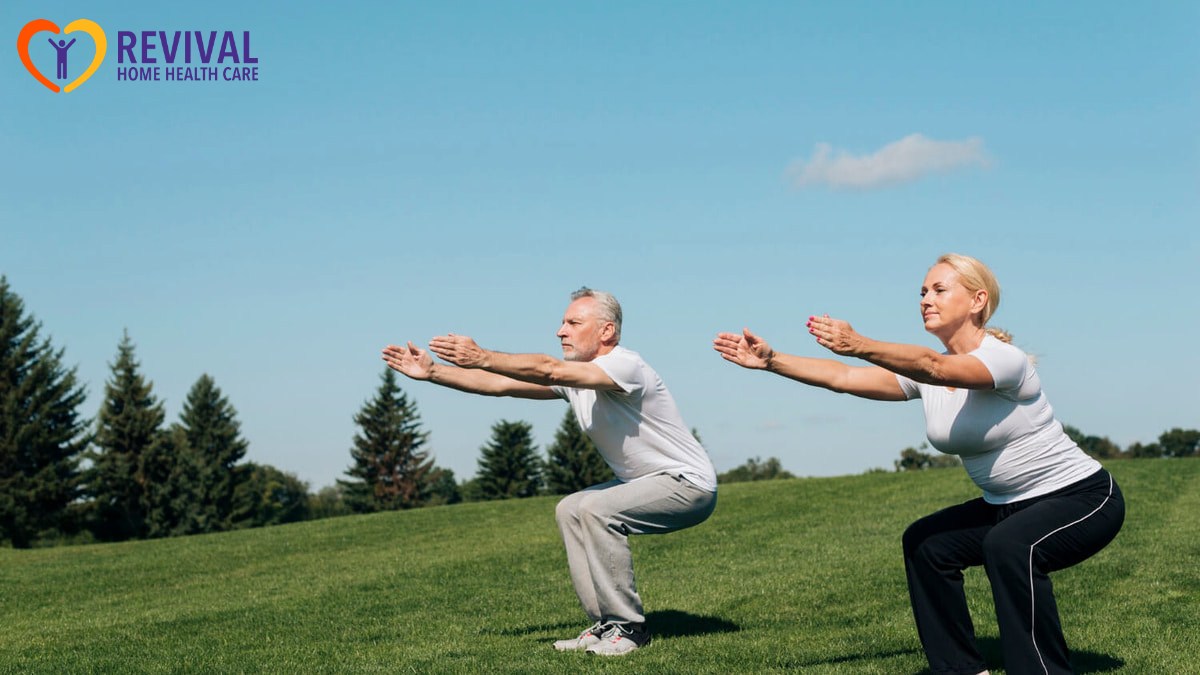
See a physical or occupational therapist if any of the following apply: repeated falls, fear of falling that limits activity, difficulty rising from a chair, balance tests showing limited stability, complicated medical conditions, or recent hospitalization. Therapists can prescribe progressive, evidence-based programs, train safe mobility techniques, and recommend home modifications.
If you need hands-on support, ask about in-home skilled therapy options that can assess risk, design a personalized exercise plan, and monitor progress.
Measuring progress and staying safe long term
Use simple measures to track improvement, for example: can they rise from a chair without using hands, can they stand on one leg for 10 to 30 seconds, or does walking endurance increase? Reassess every 4 to 6 weeks, adjust difficulty, and continue to prioritize safety checks like medication reviews and vision care.
FAQs
How long will it take before exercise reduces an older adult’s fall risk?
Many people notice improved balance and confidence within 6 to 12 weeks of consistent practice, with measurable fall-risk reductions after months of combined balance and strength work.
Can someone who uses a cane still do these exercises safely?
Yes, exercises can be adapted, starting with chair-based and supported standing moves, and a therapist can teach safe progression while preserving mobility and independence.
Are group classes like Tai Chi better than home exercises for fall prevention?
Group classes provide social support and expert guidance and are effective, but home practice plus occasional classes works well; choose the approach that ensures consistency and safety.
Stay Active Safely With In-Home Physical Therapy Support
Daily exercise routines build strength, balance, and confidence, but professional guidance ensures every move supports safety. Revival Home Health Care offers customized physical therapy sessions at home, tailored to each senior’s needs and limitations.
Our therapists focus on real-life mobility goals, walking steadily, rising safely, and reducing fall risk. With professional support from home health aides, older adults regain control of their movement while easing the load on family caregivers.
Contact us today to schedule a personalized home therapy assessment and help your loved one stay strong and secure at home.

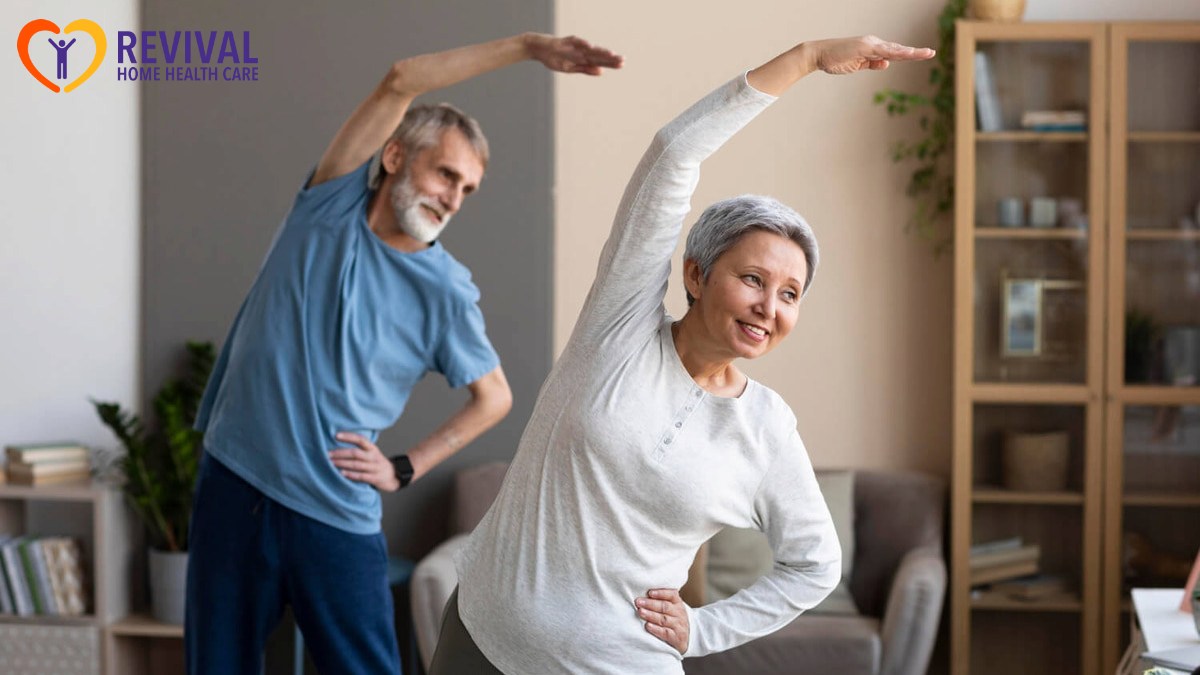
 75 Vanderbilt Ave Staten Island, NY 10304
75 Vanderbilt Ave Staten Island, NY 10304 info@revivalhhc.org
info@revivalhhc.org 718.629.1000
718.629.1000